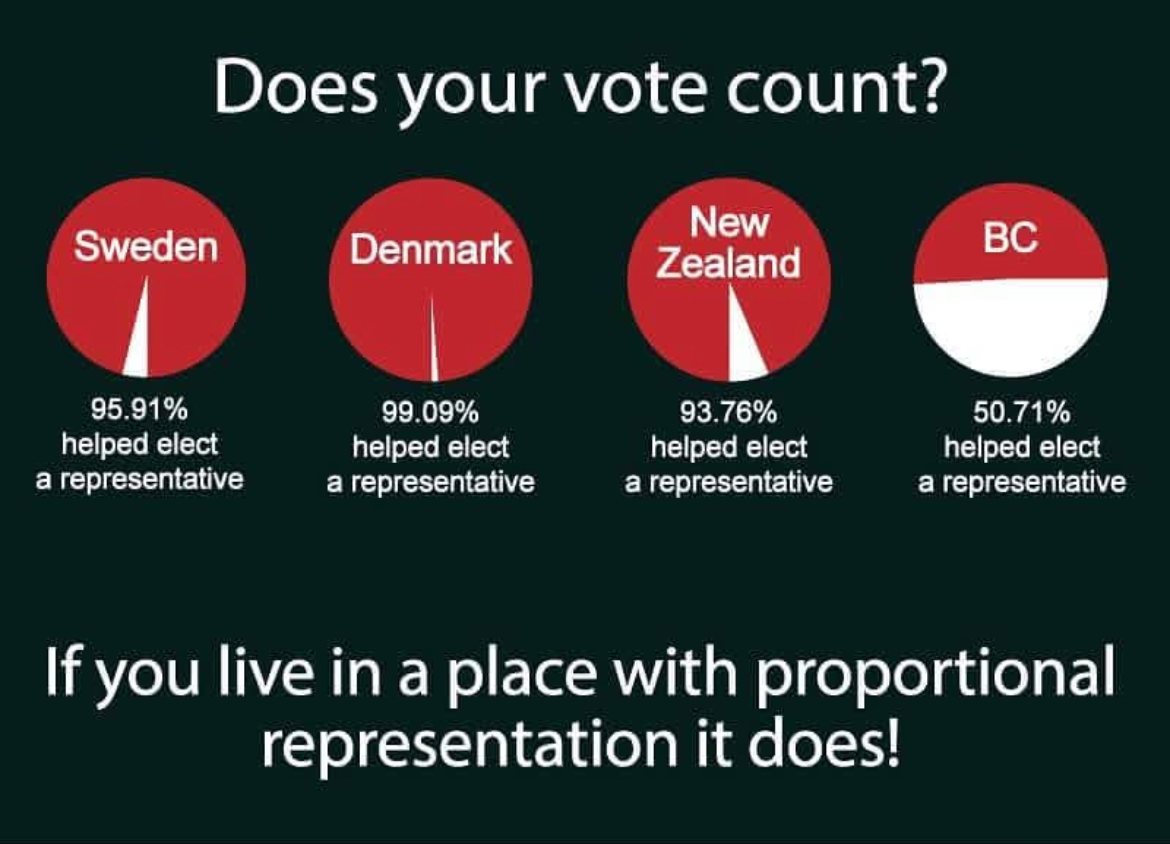This graph doesn't make any sense.
FairVote Canada
What is This Group is About?/De Quoi Parle ce Groupe?
The unofficial Lemmy movement to bring proportional representation to all levels government in Canada.
Voters deserve more choice and accountability from all politicians.
Le mouvement non officiel de Lemmy visant à amener la représentation proportionnelle à tous les niveaux de gouvernement au Canada.
Les électeurs méritent davantage de choix et de responsabilité de la part de tous les politiciens.
What is Proportional Representation?
Related Communities/Communautés Associées:
Resources/Ressources:
Official Organizations/Organisations Officielles:
We're looking for more moderators especially those who are of french and indigenous identities.
Nous recherchons davantage de modérateurs, notamment ceux qui sont d'identité française et autochtone.
I agree comparing a province to whole countries is a weird way to go about it. Ideally you'd find a comparable region in other countries to compare at least. But that data is probably hard to find. If it was part of a series with every province and territory getting their own poster though, that could kinda work.
I more mean that the information doesn't clearly convey in what way the proportional representation worked. You'd have no way of knowing that New Zealand uses MMP or what a MMP system was or how candidates were selected. You can't tell the difference between the four systems or how they contribute to electoral participation. And you're not distinguishing between apportionment and direct election of candidates, which obscures why British Columbia constituents aren't being properly represented.
I'm generally in support of apportionment as a strategy, but I think it's still somewhat inaccurate to say you're getting "full representation" as a voter under that system. There are still break-points between delegates, such that - say - 100 people voting for 4 seats might result in a 67/33 split that yields 75% of the delegates to party A and 25% of the delegates to party B. That's functionally no different than a FPTP system in which seats are gerrymandered to pack party B into one district and spread party A across the other three. The allocation of public opinion and the end result mix of elected representatives is the same.
What you still need are smaller constituencies that guarantee a more granular representation of votes. Turn that four seat election into a ten seat election and you'll have a 7:3 split rather than a 3:1 split in representation. You also open up more room for multiple parties.
